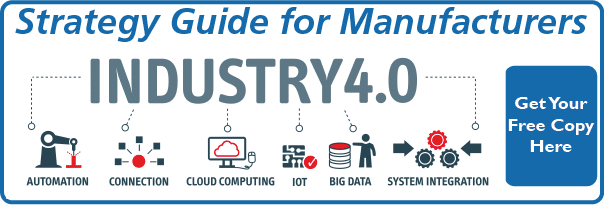
You use SaaS routinely in your business
The average adult vocabulary is 20-35,000 words and it stops growing by middle age. Professional terminology is different though. There are terms of art and specific lexicons for every industry and specialty. And there are important terms of broad applicability coined from time to time.
By now most know what SaaS (Software as a Service) is - even if they haven't added the term itself to their vocabulary. It's software that is accessed on a subscription basis via the internet. In fact you may subscribe to HubSpot digital marketing software and you probably subscribe to Microsoft 365, Google's G Suite, Constant Contact and/or Salesforce.com.
The latter kind of got the whole SaaS movement started with it's "Say No to Software" marketing slogan.
This software subscription model has impacted many equipment manufacturers. Aside from common requirements like CRM and email, it's changed budgeting and upgrade schedules for design/drawing software. How often do you hear about backward compatibility now? Not often because most folks have subscription based software which includes upgrades and versions.
However, there's a firewall between how machine builders buy, and how they sell.
That's why PaaS is a term one just doesn't hear included in discussions capital equipment manufacturers have around market development strategy.
But it's one which will become commonplace.
Understand your buyers' world
I've written before about the generational gap that's growing between management decision making around sales and marketing, and engineering buyers expectations. Social media and digital platforms are one example.
The way rising generations of buyers research, including prevalence of mobile devices, and the type of materials they seek are just a couple examples.
These same buyers have come of age as markets and models evolve in parallel with technology. The rate of home ownership among 25-34 year olds is at record lows. While high student debt levels can explain some of the gap, the 47% fall in 16 year olds acquiring drivers licenses demonstrates a larger set of trends.
These include:
- sharing economy
- subscription models
- disintermediation
Sharing economy
AirBnB and Uber are obviously the best known examples, but there are countless others. For those that want to dig in deeper, What's Mine is Yours is an interesting look at collaborative consumption.
Subscription models
Renting in lieu of home ownership is clearly an example, as are Netflix, Apple Music and meal services like BlueApron.
Disintermediation
Buyer research on the internet changes the traditional role of the industrial sales channel model common in capital equipment sales. Tesla is changing it further. Ease of access and information are two core expectations - it's no longer natural that "middle men" are core to delivering either. (We'll explore this more in the future. Machine builders are actually likely to become intermediated by PaaS providers!)
PaaS is the natural outcome
Roll these together and it's pretty easy to see how capital equipment sales could begin to shift.
But add in the power of the cloud and data, and the "service" component of the product becomes clearer. This is a fundamental shift.
Are you buying a machine? Or are you buying successful execution of a business function? The former is the traditional capital equipment sales model, obviously, while the latter likely includes a number of embedded elements.
These include:
- remote monitoring of the function
- predictive maintenance alerts
- support
- software upgrades
- data storage and reporting
- scheduled maintenance
- recommendations for operational improvement
- insights gleaned from data gathered across multiple locations/installations
You'll see how this starts to look more and more like a roll up of your SaaS subscription and your new travel model which omits hotels & taxis.
This Product as a Service approach to capital equipment sales will challenge manufacturers in a number of ways - from finance, through staffing, to sales & mission.
The fact that it's awkward or uncomfortable will prompt many to discount the trends. That's a choice for every company. But remember what happened to those who discounted import competition in the 90s.
Others will face the challenge head on, seeking opportunity in the disruption. For those, this downloadable guide to questions which will support strategy planning and discussion will be helpful.
PaaS is coming to pass - will you spectate or profit?



